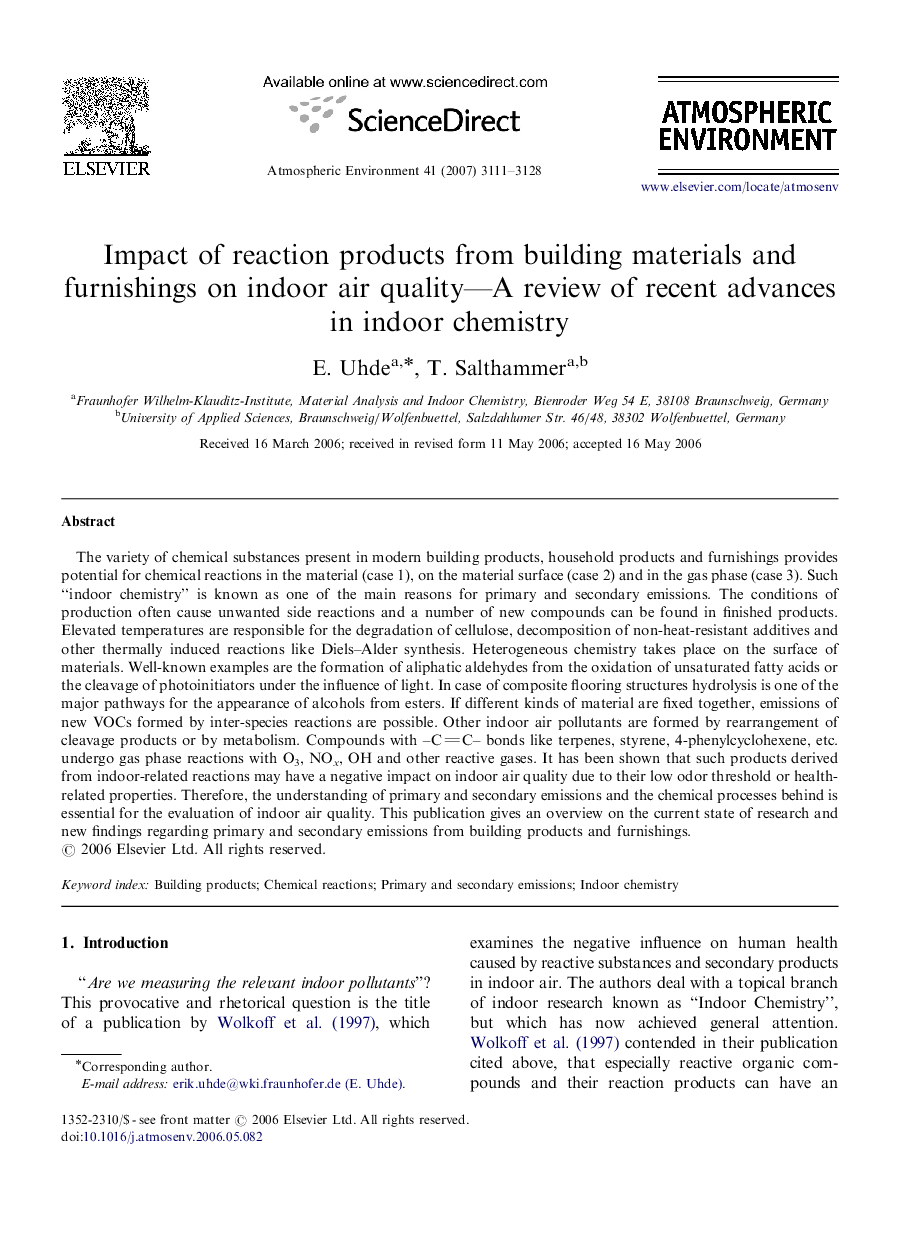| Article ID | Journal | Published Year | Pages | File Type |
|---|---|---|---|---|
| 4442806 | Atmospheric Environment | 2007 | 18 Pages |
The variety of chemical substances present in modern building products, household products and furnishings provides potential for chemical reactions in the material (case 1), on the material surface (case 2) and in the gas phase (case 3). Such “indoor chemistry” is known as one of the main reasons for primary and secondary emissions. The conditions of production often cause unwanted side reactions and a number of new compounds can be found in finished products. Elevated temperatures are responsible for the degradation of cellulose, decomposition of non-heat-resistant additives and other thermally induced reactions like Diels–Alder synthesis. Heterogeneous chemistry takes place on the surface of materials. Well-known examples are the formation of aliphatic aldehydes from the oxidation of unsaturated fatty acids or the cleavage of photoinitiators under the influence of light. In case of composite flooring structures hydrolysis is one of the major pathways for the appearance of alcohols from esters. If different kinds of material are fixed together, emissions of new VOCs formed by inter-species reactions are possible. Other indoor air pollutants are formed by rearrangement of cleavage products or by metabolism. Compounds with –CC– bonds like terpenes, styrene, 4-phenylcyclohexene, etc. undergo gas phase reactions with O3, NOx, OH and other reactive gases. It has been shown that such products derived from indoor-related reactions may have a negative impact on indoor air quality due to their low odor threshold or health-related properties. Therefore, the understanding of primary and secondary emissions and the chemical processes behind is essential for the evaluation of indoor air quality. This publication gives an overview on the current state of research and new findings regarding primary and secondary emissions from building products and furnishings.
